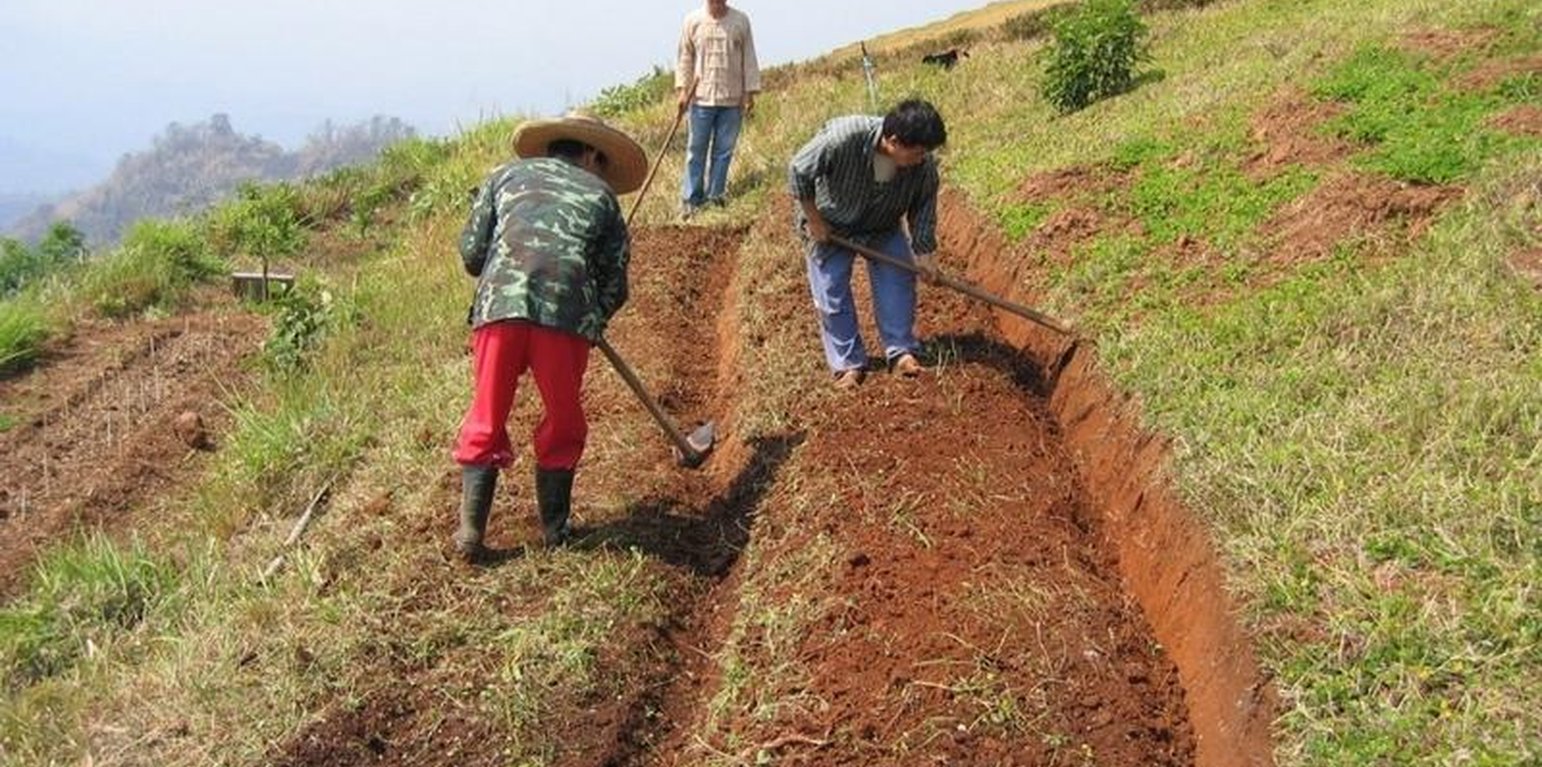



The terraces described in this case study from northern Thailand are found on hilly slopes with deep soils. The climate is humid and tropical, with 1,700-2,000 mm of rainfall annually. The main aim of the terraces is to facilitate cultivation of tea or coffee on sloping land: erosion control is secondary. Coffee and tea, as well as flowers and vegetables, are good alternatives to opium poppies - which it is government policy to eradicate.
Purpose of the Technology: After clearing natural and secondary forests by slash and burn, terraces are aligned by eye - and constructed by hoe. The width of the bed is 1.0-1.5 m depending on slope, though there are no specific technical guidelines. The length of each terrace can be up to 25 m. Down the slope, after every 3-4 terraces, there are lateral drainage channels, approximately 20-30 cm wide and 10 cm deep. Situated at the foot of a riser, each channel has a gradient of 0.5% or less. Excess water - some of which cascades over the terrace risers, with some draining through the soil - is discharged through these channels, generally to natural waterways. The risers are steep, with a slope of above 100%, and without a defined lip.
Establishment / maintenance activities and inputs: Natural grass cover develops on the risers: this is cut back by hand hoe or machete, or completely removed. The grass is often burned. After harvest (of annual crops), the land is left until immediately before the next rainy season. The terraces at this stage are covered by weeds and grasses. Land is then tilled by hoe. The weeds and grasses are removed and heaped in piles outside the cropped area. They are not composted or used for mulching - and here an opportunity is missed. Where soil fertility is a problem, chemical fertilizers are used. Maintenance includes building up/repairing of risers and levelling of terrace beds as required.
Natural / human environment: The technology was pioneered, and continues to be practiced, by refugee immigrants from China looking for new areas to start farming. These immigrants first came in the 1950s, and cultivated simply through slash and burn techniques. During the 1970s they visited relatives in Taiwan and brought back the idea of small terraces. Originally they settled illegally, but eventually they were given official permission to stay. However, official title deeds to their land have not yet been allocated.
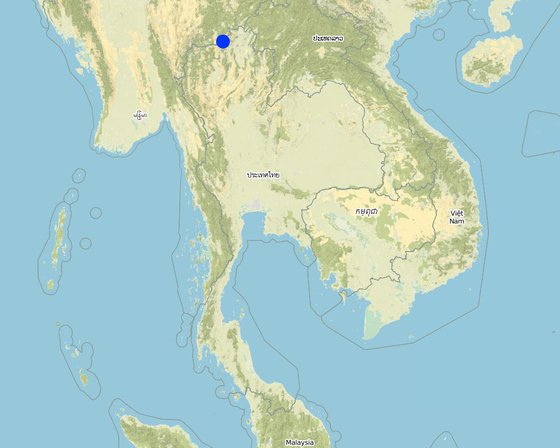
Location: Amphur Mae Fa Luang, ChiangMai, Thailand
No. of Technology sites analysed:
Spread of the Technology: evenly spread over an area (approx. 1-10 km2)
In a permanently protected area?:
Date of implementation: less than 10 years ago (recently)
Type of introduction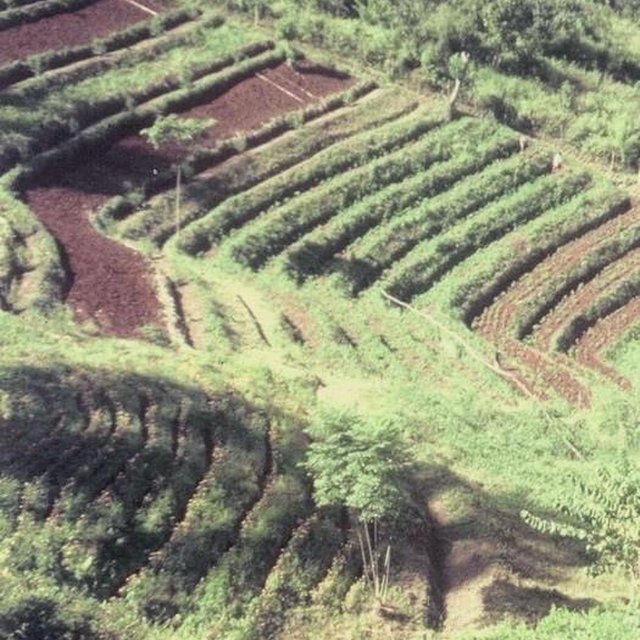
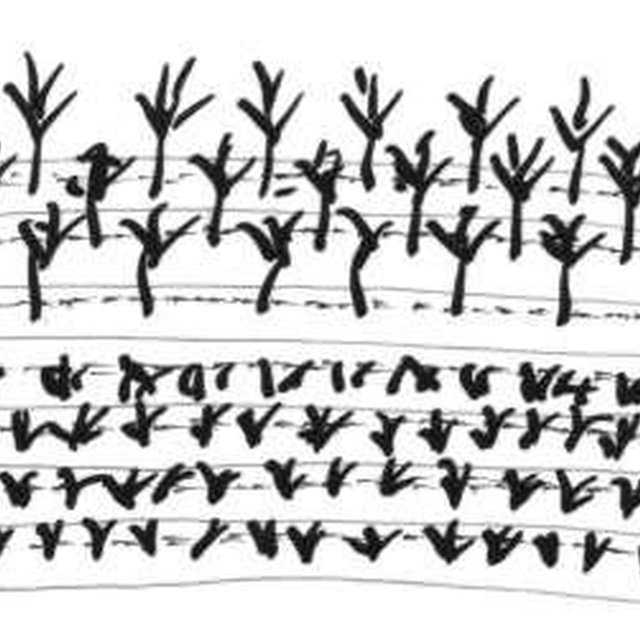






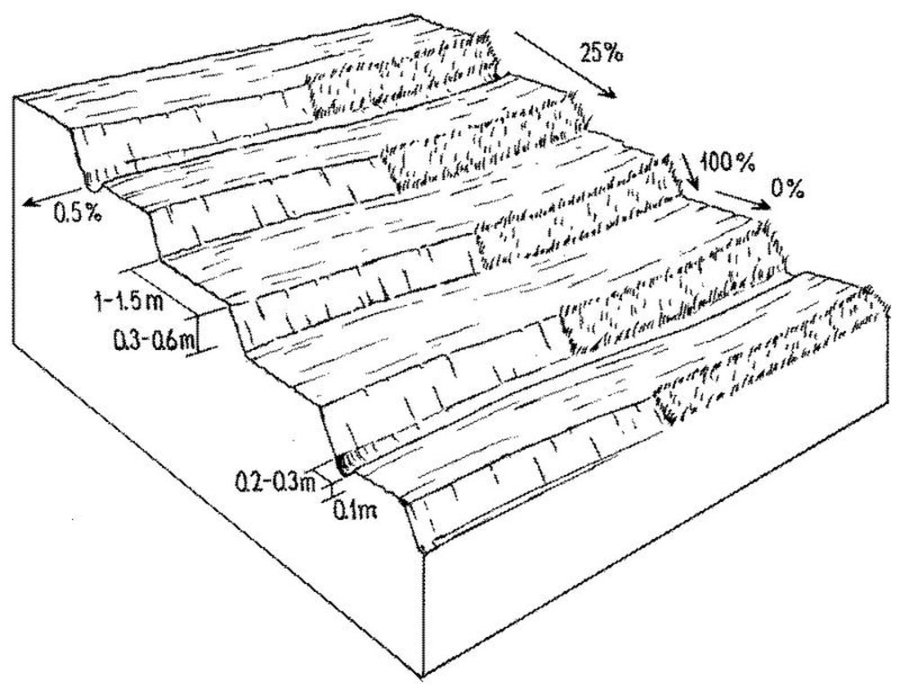
| Specify input | Unit | Quantity | Costs per Unit (Baht) | Total costs per input (Baht) | % of costs borne by land users |
| Labour | |||||
| Labour | ha | 1.0 | 270.0 | 270.0 | 100.0 |
| Equipment | |||||
| Tools | ha | 1.0 | 5.0 | 5.0 | 100.0 |
| Total costs for establishment of the Technology | 275.0 | ||||
| Total costs for establishment of the Technology in USD | 7.43 | ||||
| Specify input | Unit | Quantity | Costs per Unit (Baht) | Total costs per input (Baht) | % of costs borne by land users |
| Labour | |||||
| Labour | ha | 1.0 | 45.0 | 45.0 | 100.0 |
| Equipment | |||||
| Tools | ha | 1.0 | 45.0 | 45.0 | 100.0 |
| Total costs for maintenance of the Technology | 90.0 | ||||
| Total costs for maintenance of the Technology in USD | 2.43 | ||||
Production is not decreased.
Ease of cultivation. Can walk and work in the farm easier
Quantity before SLM: 20
Quantity after SLM: 15
During dry spells due to increased infiltration
Quantity before SLM: 50
Quantity after SLM: 10
Soil erosion is reduced